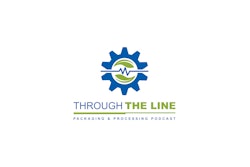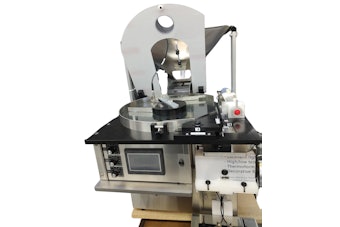Healthcare Packaging (HCP): What is the current focus of Drug Supply Chain Security Act (DSCSA)?
Peter Sturtevant: This year, the focus is shifting to wholesaler/distributors; beginning November 27, 2019, DSCSA will require them to verify the unique identifier of returned products before these can be placed into inventory for resale. A manufacturer that receives a verification request from a wholesaler/distributor or dispenser will be required to verify all serialized packages.
GS1 has just launched a new Messaging Standard in collaboration with GS1 US for the verification of serialized prescription products to meet the requirements for saleable returns. Developed and vetted by a global GS1 workgroup comprised of manufacturers, distributors and solution providers, this new standard specifies a lightweight messaging framework for product verification request and response. It will enable supply chain partners to verify that a product in their possession is suitable for forward distribution, helping them to determine whether to accept, reject or quarantine it.
HCP: How can pharma manufacturers put serialization-related data to meaningful use within their companies to help demonstrate a Return on Investment (ROI)?
Peter Sturtevant: The industry has made these investments to meet the requirements of the law with a goal of improving patient safety. According to the Patient Safety Network, adverse drug events are one of the most common preventable adverse events in all settings of care, accounting for nearly 700,000 emergency department visits and 100,000 hospitalizations[1]. The World Health Organization (WHO) states that unsafe medication practices and medication errors are a leading cause of avoidable harm in healthcare systems across the world, with a global cost estimated at $42 billion annually[2]. Knowing this, how can we place a dollar value on saving lives?
In addition to checking off the regulatory box and improving patient safety, financial benefits of serialization may be realized through resulting efficiencies in the pharmaceutical supply chain including traceability, inventory management, secure supply chains, and contract management. Improved verification of saleable returns can further reduce supply chain costs, since products that can’t be verified must be destroyed, at a considerable cumulative expense.
HCP: Is the ultimate goal(s) of serialization to improve patient safety and reduce the nation’s healthcare costs?
Peter Sturtevant: Most regulatory control in healthcare like DSCSA serialization of pharmaceuticals is aimed at improving patient safety while also driving operational efficiencies. The ability to track and verify complete, correct product identification throughout the supply chain and at point of use will help ensure delivery of what the Institute for Healthcare Improvement (IHI) calls the “five rights” of medication administration: the right drug reaches the right patient in the right dose, at the right time, via the right route. It also facilitates safe, timely and accurate removal of expired or recalled products from inventory.
HCP: Some have expressed a belief that serialization may fall short of being the solution to protecting patients from illegitimate medications. Can you address that?
Peter Sturtevant: No single action or process can guarantee prevention of falsified medicines reaching patients. The industry as a whole has agreed that authentication and chain of custody are the correct measures for supply chain stakeholders to strengthen pharmaceutical security.
To date, most serialization software companies already store the data in the cloud. By requiring fully serialized data elements to be embedded in a 2D barcode, the DSCSA makes it more difficult for bad actors to duplicate that product code and move counterfeit products through the supply chain. We hope to see resulting improvements as full DSCSA implementation increases over the next four years.
There have been several successful pilots to manage the verification of saleable returns utilizing Verification Router Services (VRS) and Lookup Directory (LD) services commercially available in the marketplace. Several of the software companies have successfully leveraged blockchain technology to manage product verification. A modest number of different VRS solutions are emerging in the marketplace, and it is highly recommended that supply chain partners explore the various options.
HCP: Who within an organization should be tasked with handling these requests? Will this all be a digital/software solution? At conferences, we’ve heard brand owners asking if they will need to set up websites or call centers to handle these, and who will field the requests if they get them from doctors/pharmacists?
Peter Sturtevant: Generally, the dispenser returns a product directly to the wholesaler, which verifies the item through their own central database, or needs request verification from the manufacturer. The process for verification of saleable returns occurs outside of the doctor’s or pharmacist’s purview.
HCP: Relatedly, what promise do you see in current or developing anti-counterfeiting efforts/technologies?
Peter Sturtevant: The hope is that serialization will help by making it easier to validate a product anywhere in the supply chain. Improvements in tracking of saleable returns with the new verification messaging standard may also positively affect the industry’s ability to screen out illegitimate products.
HCP: What are the specific coding/serialization challenges companies face with e-commerce and temperature-sensitive shipments?
Peter Sturtevant: There are companies that have cold chain measurable barcode technology to identify temperature excursions (deviations from given instructions)—so it will be known if a vaccine, for example, deviates from its specified safe temperatures, and for how long that deviation occurs. The technology exists but is not yet required by law in the U.S. The temperature and time-sensitive data can be embedded in a 2-dimensional (GS1 DataMatrix) barcode so that the paper it is printed on actually changes colors if there is an excursion.
HCP: While serialization is not mandated for food, can this industry benefit by the experience gained in the pharmaceutical industry to meet serialization compliance?
Peter Sturtevant: We know other industries like food and beverage are actively exploring serialization as it is a key tool for executing efficient and accurate product recalls, as well as tracking other supply chain data, so that trading partners can know where the product is and has been as it travels through the supply chain. With past food fraud scandals, such as the horsemeat and some instances of seafood fraud still fresh in the minds of consumers, it would be extremely beneficial for the food industry to learn from the implementation challenges and successes that the pharma industry is currently experiencing.
GS1 US is committed to providing appropriate standards that the healthcare industry can leverage to improve patient safety and ensure the best possible outcomes. We work diligently with industry manufacturers all the way to dispensers to help ensure an efficient and secure supply chain.
[1] https://psnet.ahrq.gov/primers/primer/23/Medication-Errors-and-Adverse-Drug-Events
[2] https://www.who.int/features/factfiles/patient_safety/en/
[1] https://psnet.ahrq.gov/primers/primer/23/Medication-Errors-and-Adverse-Drug-Events
[2] https://www.who.int/features/factfiles/patient_safety/en/
[1] https://psnet.ahrq.gov/primers/primer/23/Medication-Errors-and-Adverse-Drug-Events
[2] https://www.who.int/features/factfiles/patient_safety/en/





















